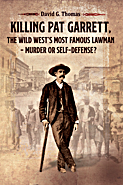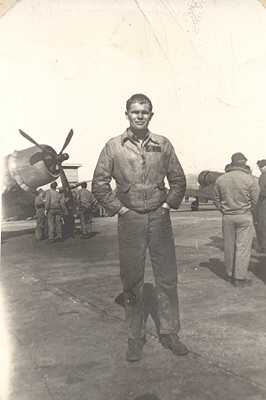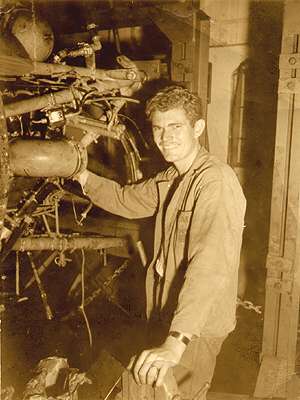|
|
||||||||||||||||||||||||
 |
||||||||||||||||||||||||
|
|
||||||||||||||||||||||||
|
||||||||||||||||||||||||
|
|
||||||||||||||||||||||||
 |
||||||||||||||||||||||||
 |
||||||||||||||||||||||||
 |
||||||||||||||||||||||||
|
|
||||||||||||||||||||||||
|
|
One Manīs Journey |
||
|
By Robert M. Berg, VMF-124 |
||
|
On 24 August 1941, I enlisted in the Marine Corps in San Francisco and took my "boot" training at the Marine barracks in San Diego, Recruit Platoon 140, Sgt Tate, DI (Drill Instructor). When boot camp ended, I was transferred to North Island NAS and assigned to Marine Base Air Detachment 2 (BAD 2), which, as I recall, was a sort of clearing house for Marines being sent either to one of the eleven USMC operating squadrons or to one of the aviation maintenance schools for further training. This was November 1941, and, according to Robert Sherrod, author of "History of Marine Aviation in World War II," there were only around 500 officers and 4000 enlisted men in Marine Aviation. At that time, our duties consisted of cleaning our barracks, sweeping the hangers, or (much to the amusement of the "old hands") being sent across the base for a bucket of "prop wash" or 50 ft of "slip stream," neither of which existed, as we all learned sooner or later! Our big thrill was just being around these great aircraft. There were SB2Us (scout bombers by Chance Vought), TBDs (torpedo bombers by Douglas), F4Fs (fighters by Grumann), and a couple of F2As (fighters by Brewster), all obsolete. On December 7th, all personnel were called back to the base and on December 8th I found myself sitting in a lifeguard tower on the beach at Coronado Island with a field telephone and an empty rifle, reporting any aircraft sighting within my field of vision. In January 1942, I was aboard a train headed for Aviation Metalsmith School in Chicago. The school was run by civilians under a Navy contract. Our living accommodations and classrooms were out on "Navy Pier," a barn of a place protruding into Lake Michigan, which was, in our opinion, the armpit of the universe! About 200 Marines were taking either mechanics or metalsmith classes, with 3 times that many sailors taking the courses. The aircraft available to train on were all 1920 and 1930 vintage, which was okay for the mechanics, but they were all covered in fabric, making things difficult for the would-be metalsmiths. Over the next 6 months, however, we all learned the basics of our chosen MOs. We also learned to regard Chicago as the best liberty town any of us were ever in, before, or since. Toward the end of June 1942, we headed for the West Coast, where we reported in at Camp Kearney, a newly set-up Marine Air Base. Camp Kearney (or Kearney Mesa as it was called) was an infantry training base during World War I. Now, it had one active runway and another under construction. There were no permanent buildings, or running water. Living quarters, mess hall, offices, and maintenance shops were all platform tents. Kearney Mesa, as I recall, was headquarters of MAG-12, so there were a number of squadrons of various types stationed there. I was assigned to VMF-122, a fighter squadron then flying Grumman F4F-4s and getting ready to pack-up and head for the Pacific. On August 6, 1942, Marines landed on Guadalcanal, which gave additional urgency to the outfitting and training of the squadron. Toward the end of August, VMF-122 did pack up and leave, but without a few of us who were to stay at Kearney and form 2 new squadrons originally equipped with F4Fs. We officially formed VMF-124 on 7 September and later in September or early October, 8 or 10 of our mechanics were headed back to Stratfort, Connecticut for a quick familiarization course on a new fighter designated F4U-1 Corsair. About 10 days later, our mechanics arrived back on base and we began receiving Corsairs late in October. Everyone down to cooks and office personnel were amazed at the size and beauty of this grand airplane, but we had little time for looking. Changes were being made almost daily and our pilots needed all the time possible to convert from the little F4F-4 to the big F4U-1. We were very fortunate in one respect, though, we had a wonderful addition to our squadron. A tech-rep from Chance Vought by the name of Mel Raffo joined us in Kearney and stayed with us all throughout our tour in the South Pacific. Without Mel's expertise, we would have been hard pressed to keep those big birds in shape to fly. Mel passed away a few years ago, but his son always attends our VMF-124 reunions. Between October 1942 and January 1943, our pilots managed to obtain an average of 20 hours in the Corsair. In January, 24 F4U-1s were loaded aboard the USS Kitty Hawk bound for Espiritu Santo in the New Hebrides, while we were loaded aboard the SS Lurline (1) for a luxury cruise to New Caledonia, then a not-so-luxurious cruise on the USS Hunter Liggett to Efate, then to Espiritu Santo. Then part of us flew in a PB4Y to Guadalcanal, arriving on February 12, 1943, our pilots escorting us all the way. We had initially landed on Henderson Field, but were later transferred to a new strip designated "fighter one," and would remain there for most of our tour of duty. |
||
 |
|
VMF-124 on Guadalcanal - February 1943. |
 |
|
Using their home-made apparatus constructed of coconut |
 |
|
The tail of the F4U is hoisted as VMF-124 mechanics prepare to |
|
A previously stated, changes on the Corsair were made almost daily, and the ground crew under the expert direction of Mel Raffo was kept busy keeping aircraft available for our pilots. In April, the VMF-124 pilots took off to Sidney, Australia for R&R, and we in the ground crew continued to maintain aircraft for the pilots of VMF-213. In June, about one half of the ground crew returned to Espiritu Santo to make necessary changes on the flood of new Corsairs arriving from the States. This operation was referred to as "Bevy Bound Babies." Bevy being the code word for either Munda or Vella La Vella, I can't remember which. We continued to execute the changes to the Corsair at "Santo," while our pilots were transferred up to Munda and left virtually without a ground crew. Marine Corp Aviation was growing at such a fast pace that it was not uncommon for the pilots to be one place, while their ground echelons were someplace else. In September, the remainder of the ground crew and our pilots arrived at Espiritu Santo and we all boarded the USS James S. McClintock, a "Victory" class cargo ship for the 22-plus-day trip back to San Francisco and new duties. Back in May, we had lost our Commanding Officer, Major William Gise. Our new CO was Major Bill Millington, a great man and a valued friend through the years, until his death in 2000. After enjoying our 30-day leave, some of us reported in at MAS Mojave to re-form VMF-124. As I recall, there were 6 officer pilots and 26 enlisted men from the original squadron charged with the training of the new VMF-124. Hardly a year earlier, these officers had been 2nd Lts and we enlisted men had been PFCs and Corporals. Now, they were Captains and we were Senior NCOs. War does strange things, we grew up very fast. Pilot training consisted of gunnery, test hops, night flying, cross country, navigational hops, and a lot of ground support missions with the 5th Marines at Camp Pendleton, CA. Our job was to make sure that aircraft availability was maintained at the highest level possible, which I'm proud to say we did. In August 1944, all of our pilots qualified for carrier checkouts on the USS Makassar Straight off San Diego, and in September 1944, we loaded our aircraft and personnel onboard the USS Ticonderoga CV-14. |
 |
|||
|
Robert M. Berg, MAS Mojave, 1944. A F4U-1 Corsair is |
|||
|
We arrived at Pearl Harbor, Oahu, T. H. (Territory of Hawaii) on 18 September and set up operations at MCAS Ewa. During October and November, our pilots were engaged almost daily in close air support training. During November, we were not only kept busy maintaining aircraft availability for daily mission, but were also gathering the equipment and spare parts we would need for our next assignment. On December 1, VMF-124 was attached to MAG-44 3rd MAW and stood by for duty aboard the USS Essex CV-9. In mid-December, our aircraft and pilots from both VMF-213 and VMF-124, and ground echelons from VMF-124, were loaded aboard the USS Hollandia CVE-97 headed for Ulithi Atoll. We transferred to Essex on Christmas day, 1944. I, along with a number of Master Sergeants, were fortunate to be assigned to CPO quarters, and were amazed at the accommodations. Clean sheets, hot showers, laundry, and great food. Not at all like that mud-pit Guadalcanal. We put to sea sometime during the night and 30 minutes before dawn General Quarters sounded, dragging us to reality. The next couple of days were spent getting familiar with shipboard routine and servicing our aircraft under very crowded conditions. It was important to maintain the highest number of combat-ready aircraft, so any repairs requiring over 8 hours meant that that aircraft go over the side to make room for a replacement brought in every few days on "Jeep" carriers with the supply and re-fueling fleet. That was hard for those of us who had been in the original Corsair squadron without spare parts or replacement aircraft, but we came to realize the necessity under the conditions now existing. Another problem we had to deal with was the total lack of foxholes on a carrier. When you are under attack, where do you go? Our aircraft were in the air either on a strike or on combat air patrol. What did we do? We solved our problem when we discovered that a large number of 20mm anti-aircraft guns were not manned, so we volunteered and were checked out by Navy gunners. It is doubtful that any of us hit anything but the blue sky, but it sure did keep us busy until our aircraft returned. |
 |
|||
|
Robert M. Berg, aboard the USS Essex, 1945. |
|||
|
If my memory serves, we were relieved sometime in April, and most of us were assigned to other duties. We had the satisfaction of helping to develop a great fighter aircraft, and knowing some wonderful officer pilots and enlisted men. Otherwise, we just did what we were trained to do. (2) What about VMF-124? It became a reserve squadron, originally flying F4U Cosairs, and 50 years later was VMA-124 flying A-4M Skyhawks. The squadron was decommissioned in 2000. Three generations of Marines served with pride. Footnotes (1) The Lurline was a very fine cruise ship owned by the Matson Steamship line and used for the trip between Honolulu and the West Coast. Everything onboard was first class. She was used exclusively by the Corps and never needed an escort due to her cruise speed of almost 30 knots. She survived the war and for years cruised the Mediterranean. (2) The first two carrier-based Marine squadrons flying F4U Corsairs during WW II were VMF-124 and VMF-213. During shake-down and operations aboard the USS Essex, the two squadrons lost 13 planes:
Admiral McCain was quoted as saying when the Marines shot down 3 Japanese Helens (Nakajima KI49 Army Bombers) making kamikaze runs on the task force, "Three cheers for the Leathernecks!" |
|
|
Air Group 4 - "Casablanca to Tokyo" |
|||
|
|
|||